Water hyacinth - An invasive beauty all over the world - Photos from Portugal
Anyone got a clue why water hyacinth (Eichornia crassipes) is now spread all over the world?

Yes, it has beautiful flowers! And yes, it is due to man!
Water hyacinth is an invasive plant that is native of from the Amazon basin, in Brazil and Peru (South America).
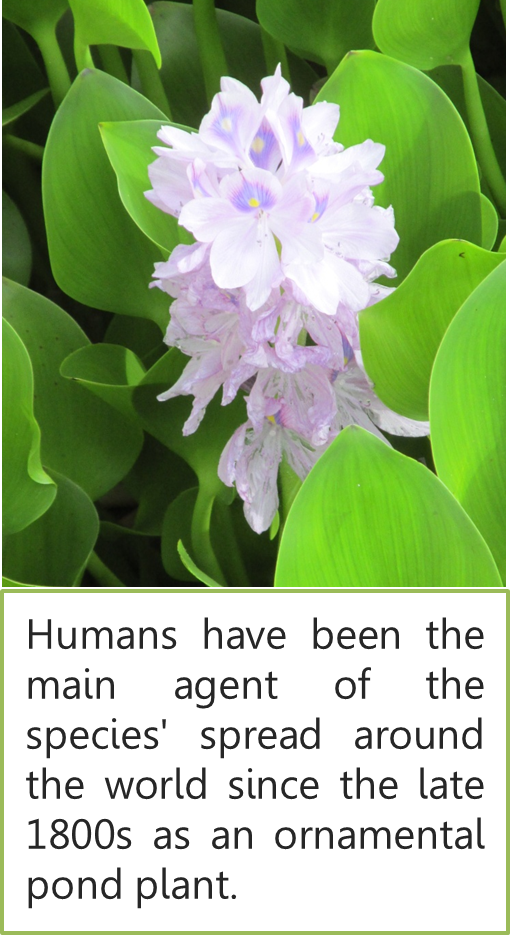
Now it's present in more than 50 countries on five continents.
Water hyacinth is established in most tropical and subtropical countries between 39°N and 39°S (Figure 1) as well as in many warm-temperate regions without frost.
In the absence of natural enemies, water hyacinth forms dense impenetrable mats across water surfaces in many of those countries, where it severely degrades aquatic ecosystems and limits their utilization.
Water hyacinth is one of the world's worst weeds!
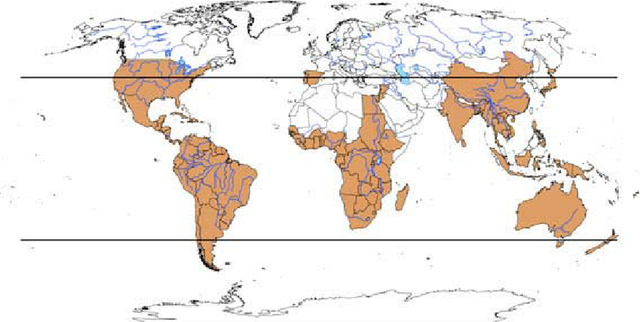
Description
Water hyacinth is a perennial aquatic plant, generally free floating in open water but often rooted. Each plant consists of a rosette of 6-10 leaves attached to a rhizome with a well-developed fibrous root system. It's very variable in size. When in an uncrowded situation they tend to have short (<30 cm tall) with inflated bulbous petioles, while in a dense stand the plants are taller with elongated petioles up to 1.5 m in length (Figura 2). The inflorescence is a spike, up to 50 cm high, with up to 23 flowers. Each flower has six petals, purplish blue or lavender to pinkish, the uppermost petal with a yellow, blue-bordered central splotch. They open together, starting at night, completing the process in the morning and withering by the next night. Each capsule may contain up to 450 small seeds, each about 1 x 4 mm.
Figure 2 - Morphology of water hyacinth plants: A. The "attenuated-petiole" rosette form produced in crowded conditions; B. An expanding axillary bud; C. A developing ramet; and D. The "bulbous-petiole" rosette form produced in open conditions. Abbreviations: ar - adventitious root; in - inflorescence; is - leaf isthmus; la - leaf blade; pl - primary leaf; pd - peduncle of flower spike; pt - leaf petiole; rh - rhizome; sp - spathe; st - stolon. Source: USDA Agricultural Research Service
Plants in the middle of the mat are taller than those on the edge
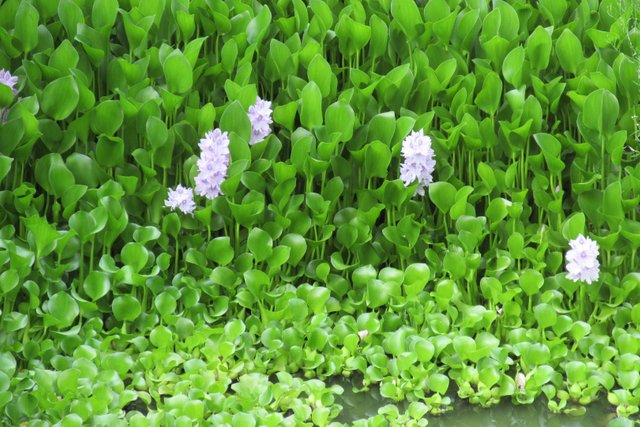
The "bulbous-petiole" rosette form produced in open conditions
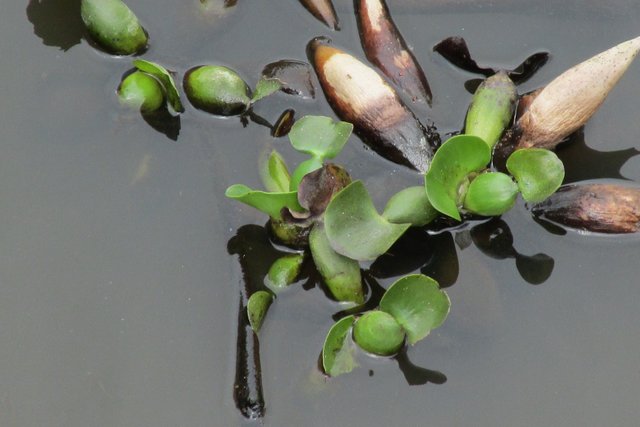
How they do it?
Reproduction is both sexual and asexual
One inflorescence can produce up tp 3000 of long-lived seeds (they can remain viable for up to 20 years) which are easily transported with the water flow. But the main mode of reproduction is asexual as it produces daughter plants on stolons from the mother plant (vegetative propagation). As you can see in the photos above, plants on the edge of a mat form stolon buds while those in the middle may not. Populations increase rapidly, doubling every 5 to 11–15 days under suitable conditions. One individual has the ability to cover (invade) a pound (Figure 3). The optimum temperature for growth of is 25-30°C, and it ceases when water temperature is above 40°C or below 10°C. Anyway, water hyacinth can tolerate short periods of freezing, and it's growth is largely exuberated in nutrient rich waters, particularly if rich in nitrogen, phosphorus, and potassium.
They grow in shallow temporary ponds, wetlands and marshes, sluggish flowing waters, lakes, reservoirs and rivers.
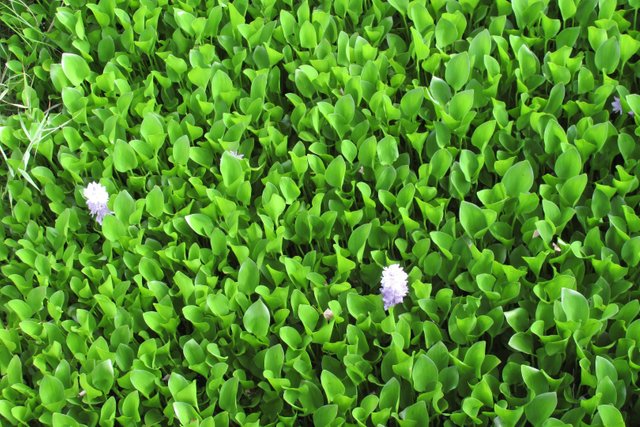
Major impacts
Economic:
It mainly interferes with water transport, communication, and access, causing huge costs with control or removal.
- Interference with navigation: southern USA ($35 million/ year); south Africa, southeast Asia ($10 million/ year, but it can be much higher), Australia, Congo and Sudan
- Interference with recreational uses of aquatic systems;
- Reduction of useful water surface area for fishing;
- Risk of mechanical damage to hydroelectric systems and interruption of power generation: Populations living along Lake Victoria in Africa have been negatively affected by the water hyacinth which clogged water ways, resulted in the closure of a hydroelectric plant at Jinga.
- Clogging of irrigation canals and pump, or covering rice paddies
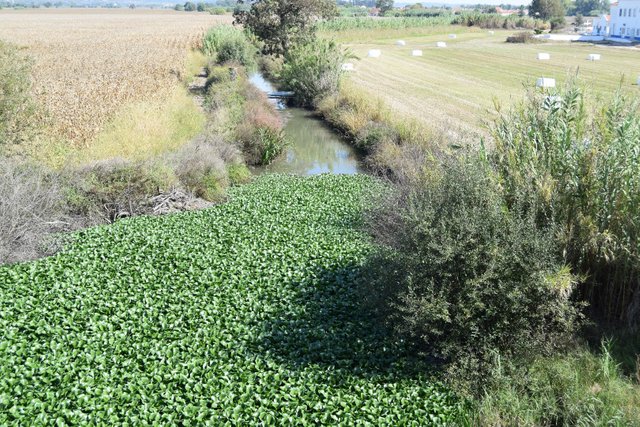
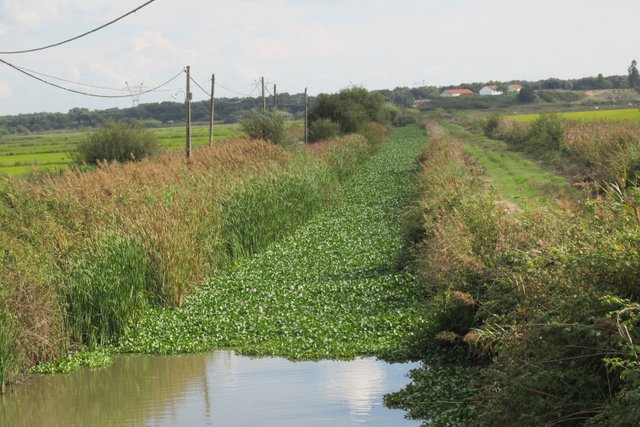
Environmental:
- Reduce light penetration into the water column, causing physico-chemical changes in the water: declines in temperature, pH, biological oxygen demand (organic load), and nutrient levels. When there is a complete decline of dissolved oxygen, it leads to the death of great number of fish;
- It outcompetes indigenous aquatic macrophytes and is responsible for drastic changes in the plant community, which implies negative impacts in native species of invertebrates, fish, and birds; - It reduces the flow, which can result in flooding and damage to canal banks and structures;
- When mats decompose dissolved oxygen levels are reduced and sedimentation of rivers, lakes, and impoundments increases.
Some authors defend the ability of water hyacinth to passively absorb heavy metals and nutrients, which could be put to good use.
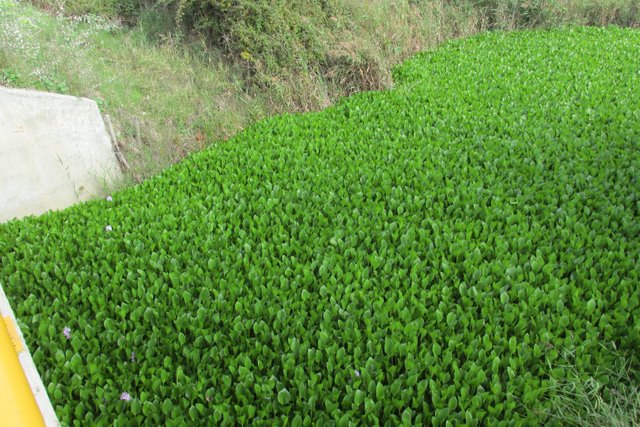
Social & Health:
- Reduction in the quality and quantity of drinking water caused by bad odors, color, taste, and turbidity;
- With water quality reduction, mosquitoes, snails and other organisms associated with human illnesses (malaria, schistosomiasis, encephalitis, filariasis and cholera ) are encouraged.
In Papua New Guinea water hyacinth disrupted water transport by canoes and larger vessels, obstructing people's access to schools, health centers, government services, food gardens, fishing grounds and local markets.
It's not in Papua New Guinea, but I found this photo very impressive
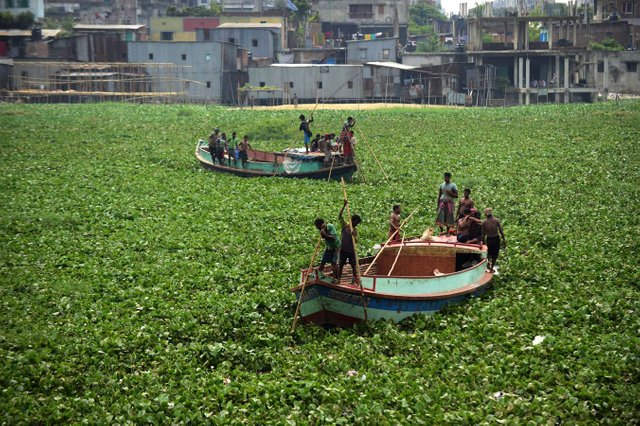
Does this beauty compensate such negative impacts?!?! I guess not!
Sources
- CABI 2015
- GISD 2017
- Hill MP, Coetzee JA, Julien MH, Center T (2011) Water hyacinth. In: Simberloff D, Rejmanek M (eds) Encyclopedia of Biological Invasions. University of California Press, Berkeley and Los Angeles, California, pp 689-691
- Sullivan PR, Wood R (2012) Water hyacinth (Eichhornia crassipes (Mart.) Solms) seed longevity and the implications for management. In: Developing solutions to evolving weed problems. 18th Australasian Weeds Conference, Melbourne, Victoria, Australia, 8-11 October 2012, pp 37-40. Weed Science Society of Victoria Inc., Frankston, Australia
- Téllez TR, López EM, Granado G, Pérez EA, López RM, Sánchez Guzmán JM (2008) The water hyacinth, Eichhornia crassipes: an invasive plant in the Guadiana River Basin (Spain). Aquat Inv 3(1), 42–53
Images and photos from other authors were properly cited above.
If you're interested in invasive species subject you would probably like to see my previous posts:
I am a Conservation Biologist studying invasive plants. For this post I wanted to share some practical impacts of invasive species, and I figured out it would be better with an example. Hope you liked this approach. Water hyacinth is one the most problematic aquatic invasive species, and Spain is facing huge problems in the last years. I also wanted to write about the spreading of water hyacinth in Spain, but this post was getting very long. I will share that story soon.
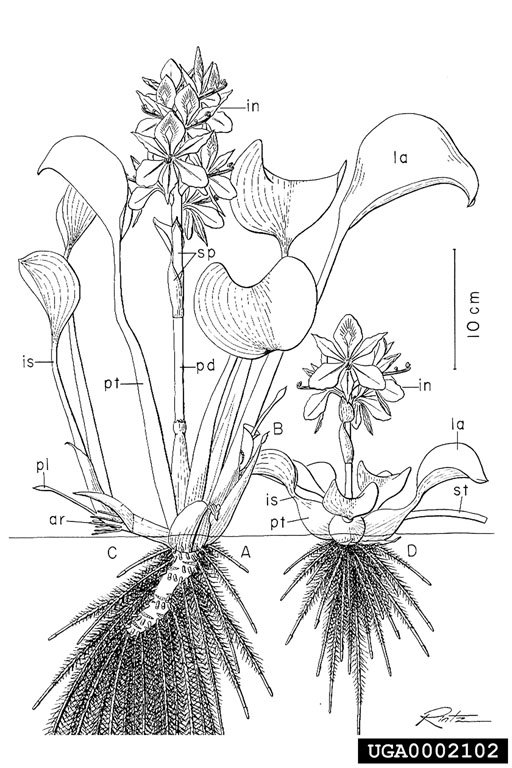
Wow! Thank you for spreading the word out on this impressively powerful and, of course, invasive specie. I have been interested in invasive species for many years now and didn't know about this as I live to far up north to see them in the area.
Thanks again for being proactive about this problem that we all face knowingly or not. All for one and one for all! Namaste :)
Thanks for commenting. I wanted to write about the impacts...but I didn't know how to make it minimal interesting. My 2nd post about introduced species that become invasive didn't gather much attention and it is on of the most important. I think it's important to get people more conscious about invasive species after all, prevention is the best attitude and people are fundamental on that ;) Water hyacinth is at the present relatively close to me...but I will put that on other post :p
GREAT WORK, if only all people were as concerned citizens of this world as your are, this place would be a much better one. Thanks for your dedication, time and hard work. Namaste :)
Most of the "unbalanced ecosystems" we have today started many years ago, because people didn't know it could be bad to transport species around the world. Some of them aren't harmful. For example, I love potatoes and tomatoes...and I'm glad portuguese sailorman bring those here. Probably I should have write that 2nd post with this kind of examples...;) Namaste!
Parabéns pelo post! De facto, parece tornar-se um problema cada vez maior. Há pouco tempo, numa visita a Espanha, surpreendi-me por ter detectado a partir de uma das pontes de Badajoz, aquilo que me pareceu ser uma mancha razoável de E. crassipes no Guadiana. Sabes se é possível?
Tenho a certeza. Também o vi em numa visita a Badajoz em Maio, mas era ainda pouco. Aqui nos comentários o @rmach partilhou um vídeo que foi filmado lá :( Há quem diga que já foi visto em Portugal na zona da ponte da Ajuda...
Pois... bem me pareceu. O que surpreendeu foi a dimensão da mancha. Sendo assim, não há-de faltar muito para se começar a espalhar seriamente do lado português.
Nas pontes de Badajoz vi outra invasora que estava mais espalhada, Nymphea mexicana e sei que foi agora assinado um contrato para remover estas invasoras. Tenho um post em preparação sobre a invasão do Guadiana. Existem barreiras flutuantes colocadas pela EDIA, mas acho que estão todos a subestimar a capacidade invasora desta planta.
No Guadiana, digo
Here it is moving down the river and settling. Incredibly efficient.
Yes, I fought these most of my life in Florida. But they are so beautiful I kept some in my water ponds in my garden. Until we are willing to use them for food and fuel they will be a problem. Some people use them to feed livestock in Florida, but that's about it.
Wow, I didn't know it was invasive. Thank you for the information.
You're so welcome! Thanks for sharing it on Twitter :)